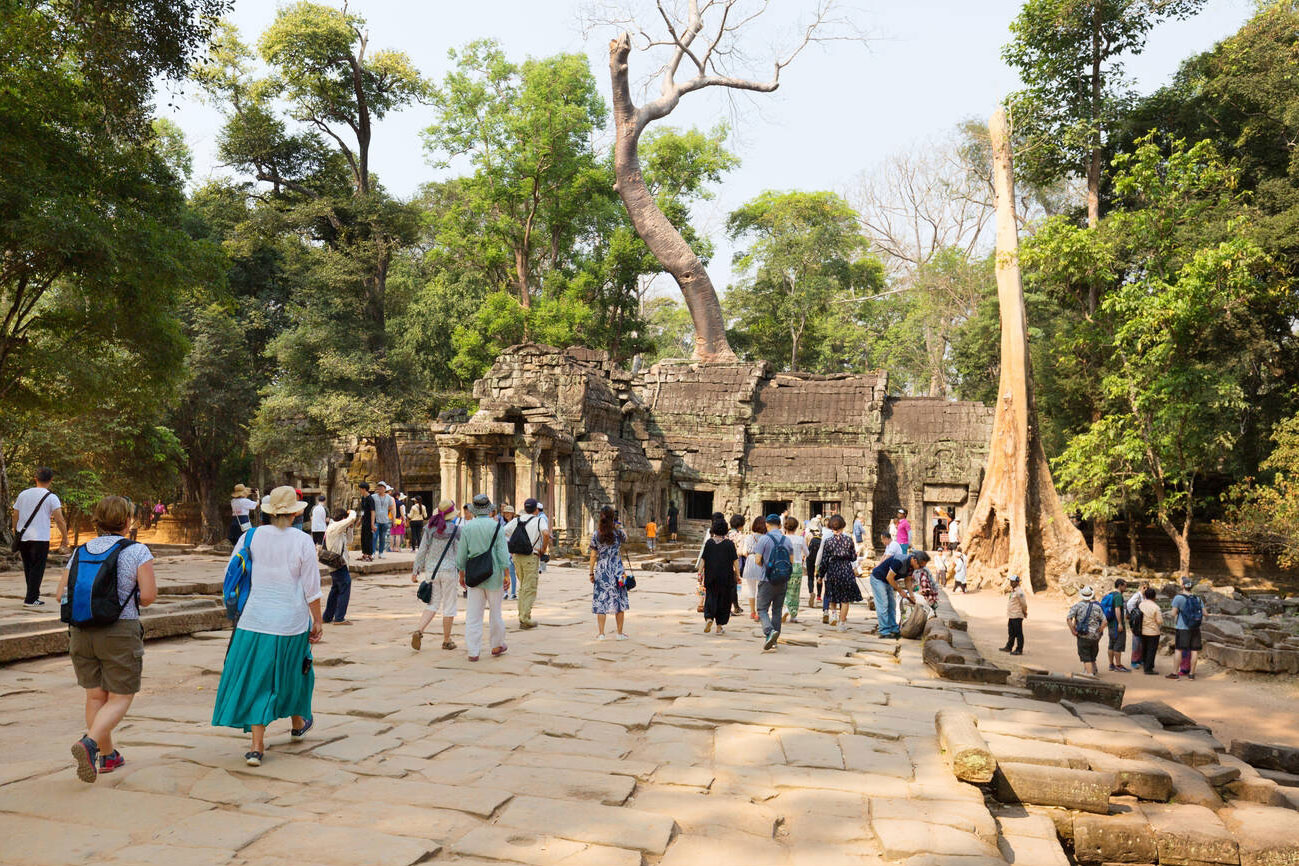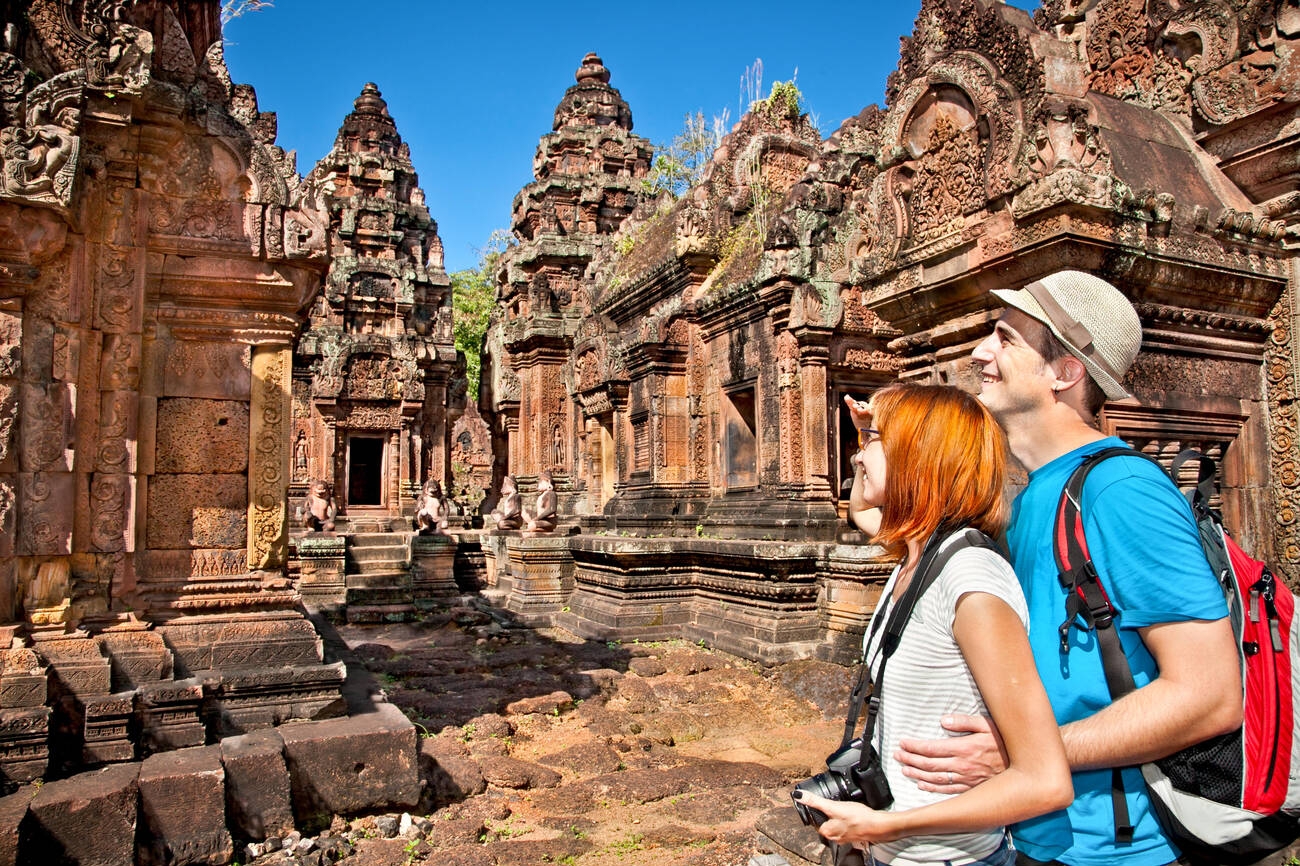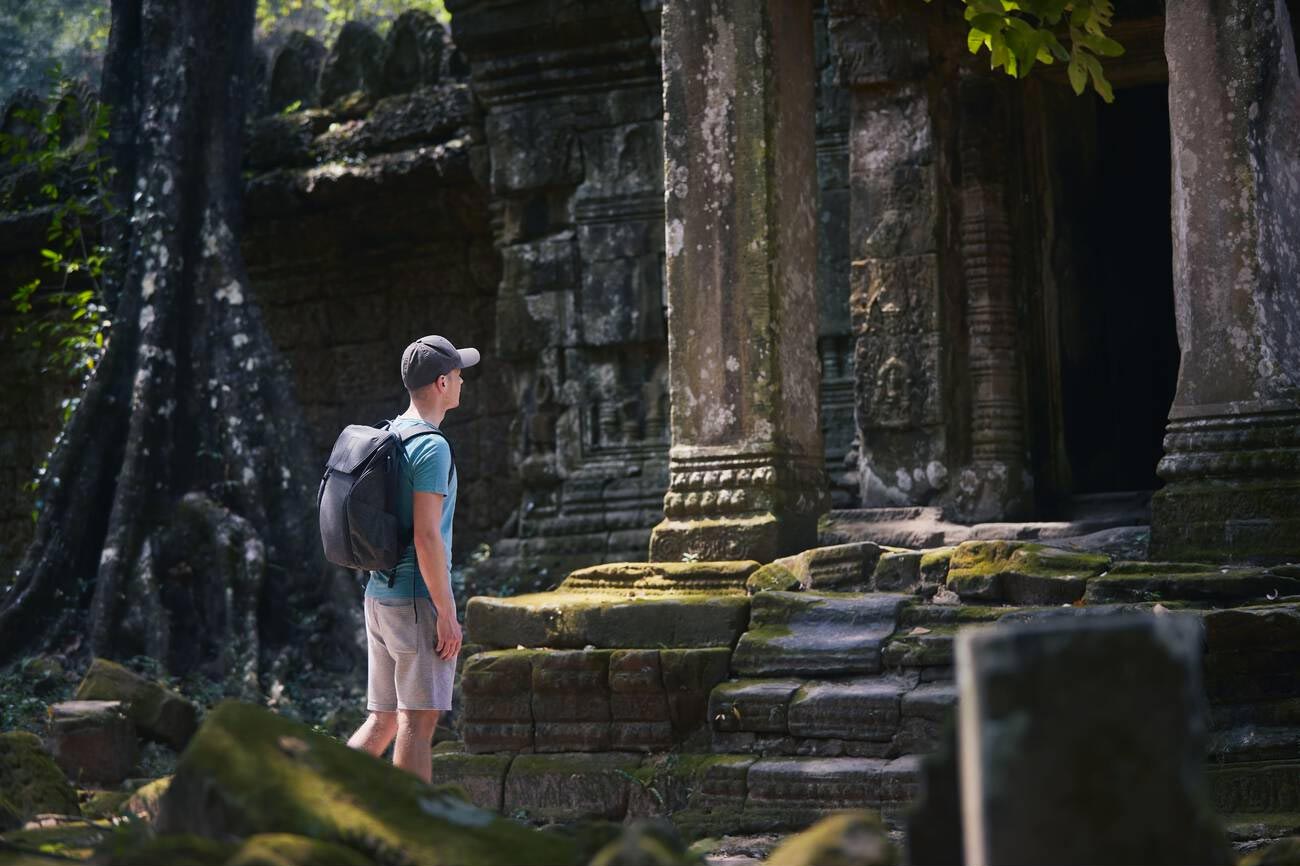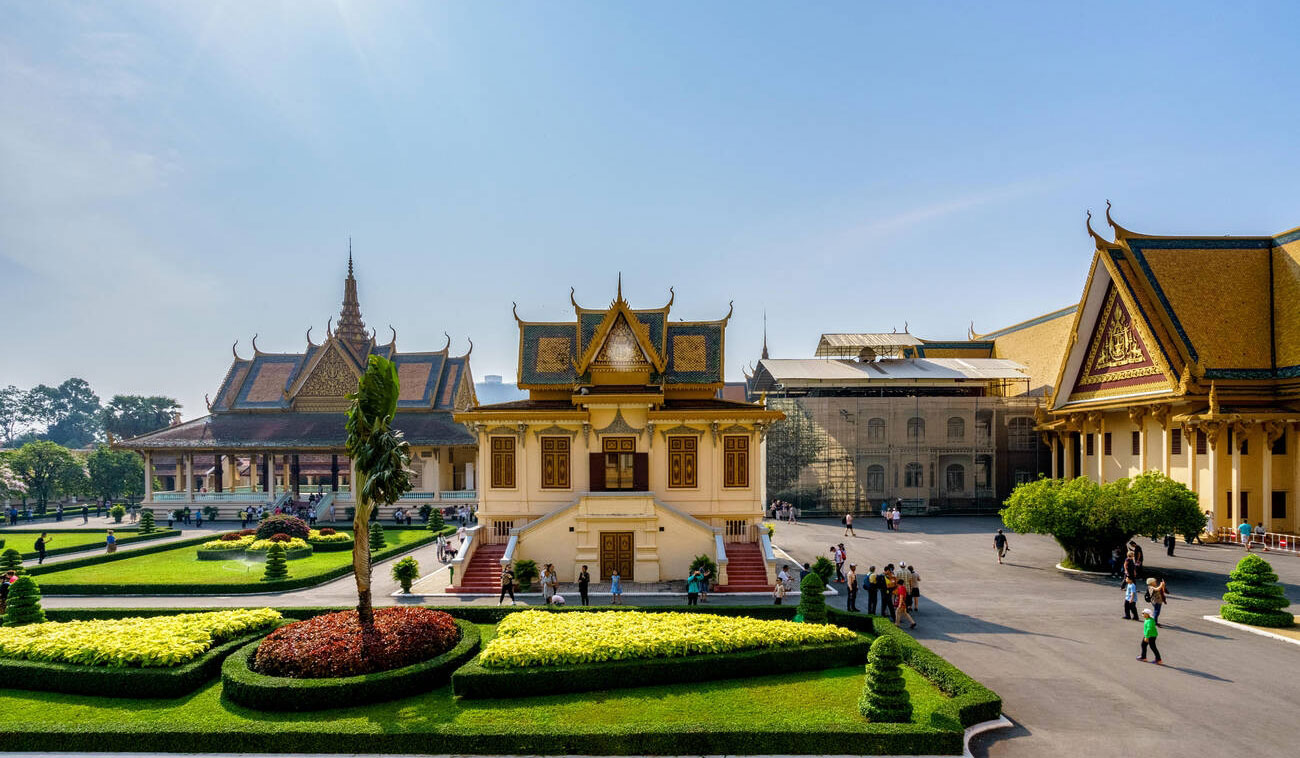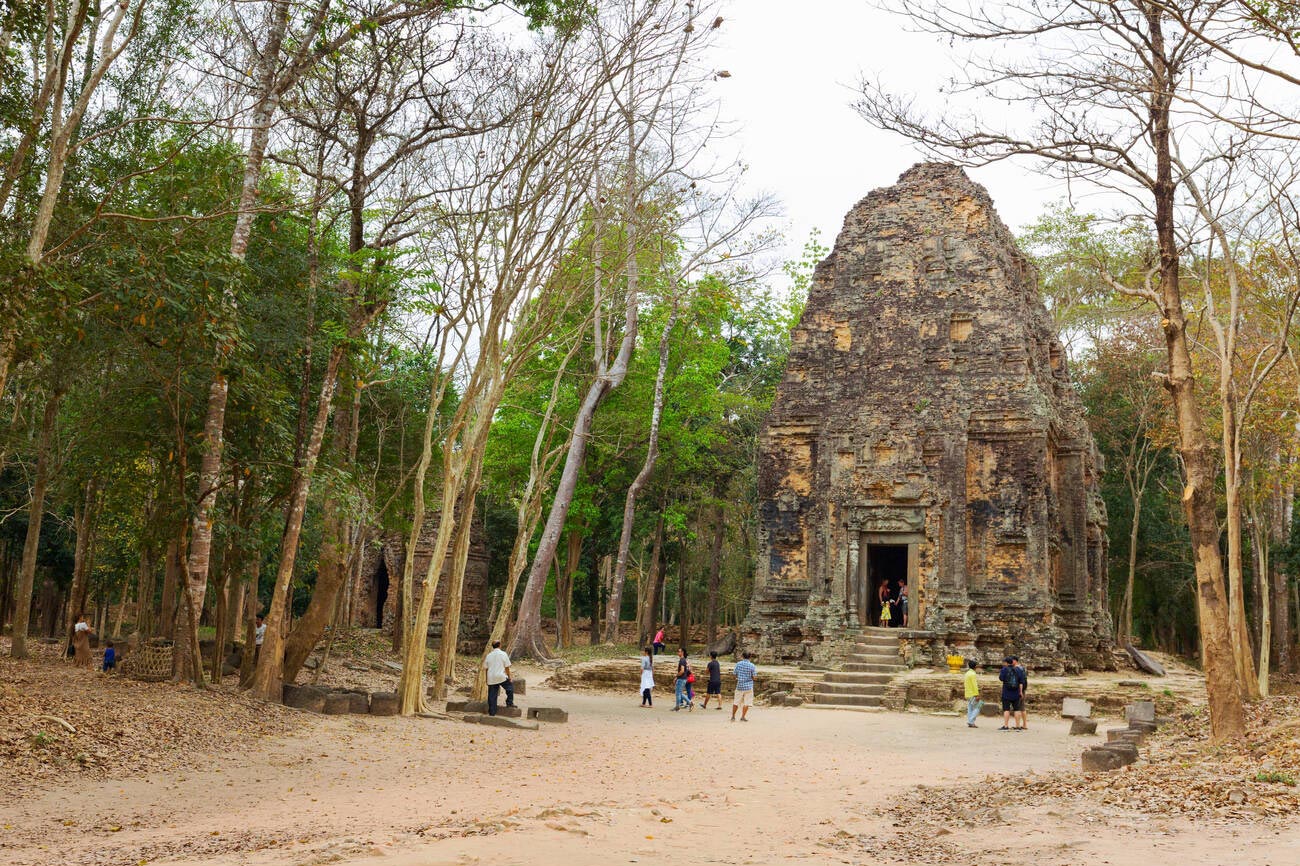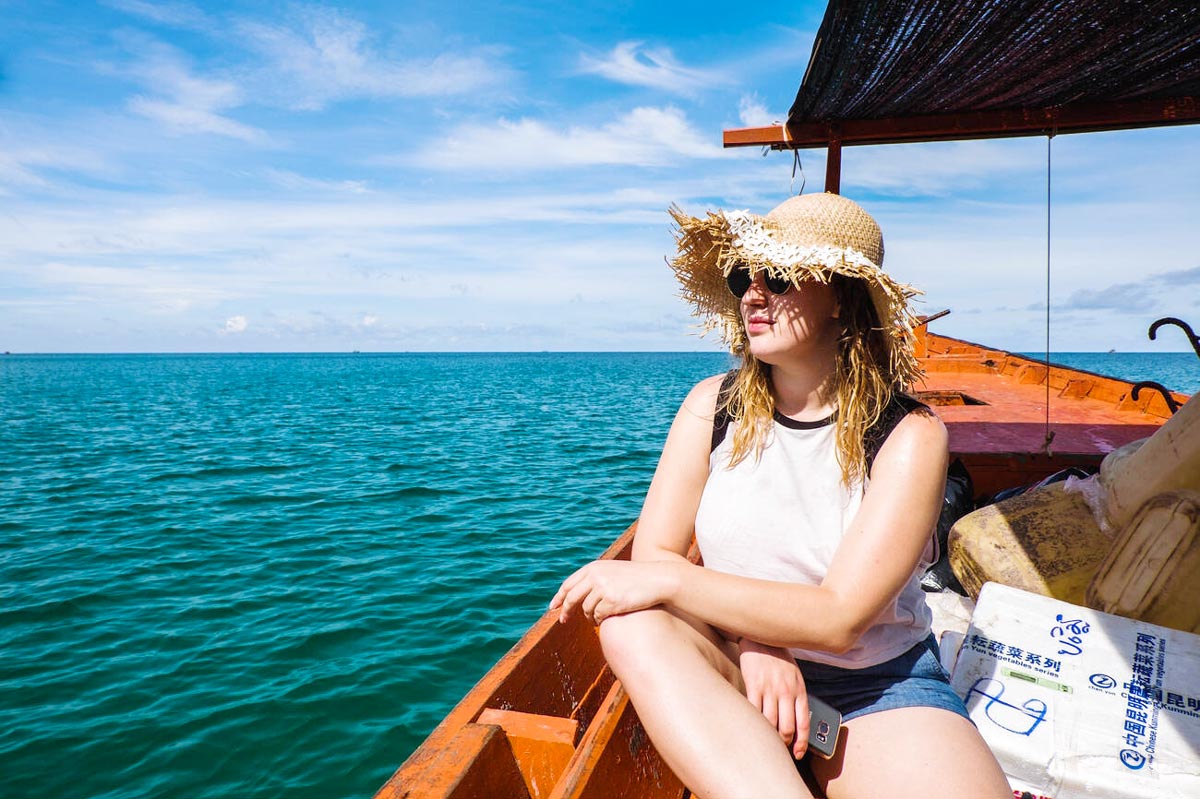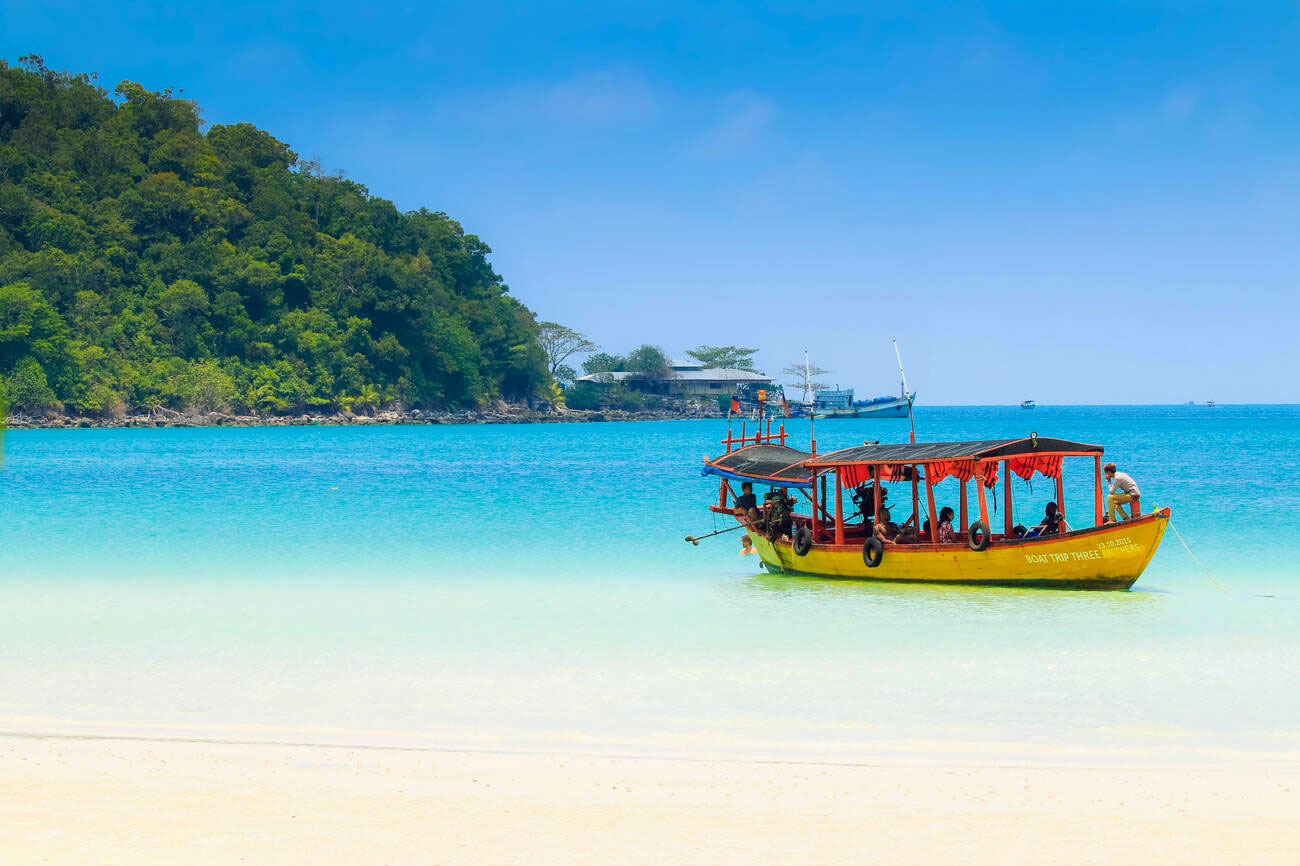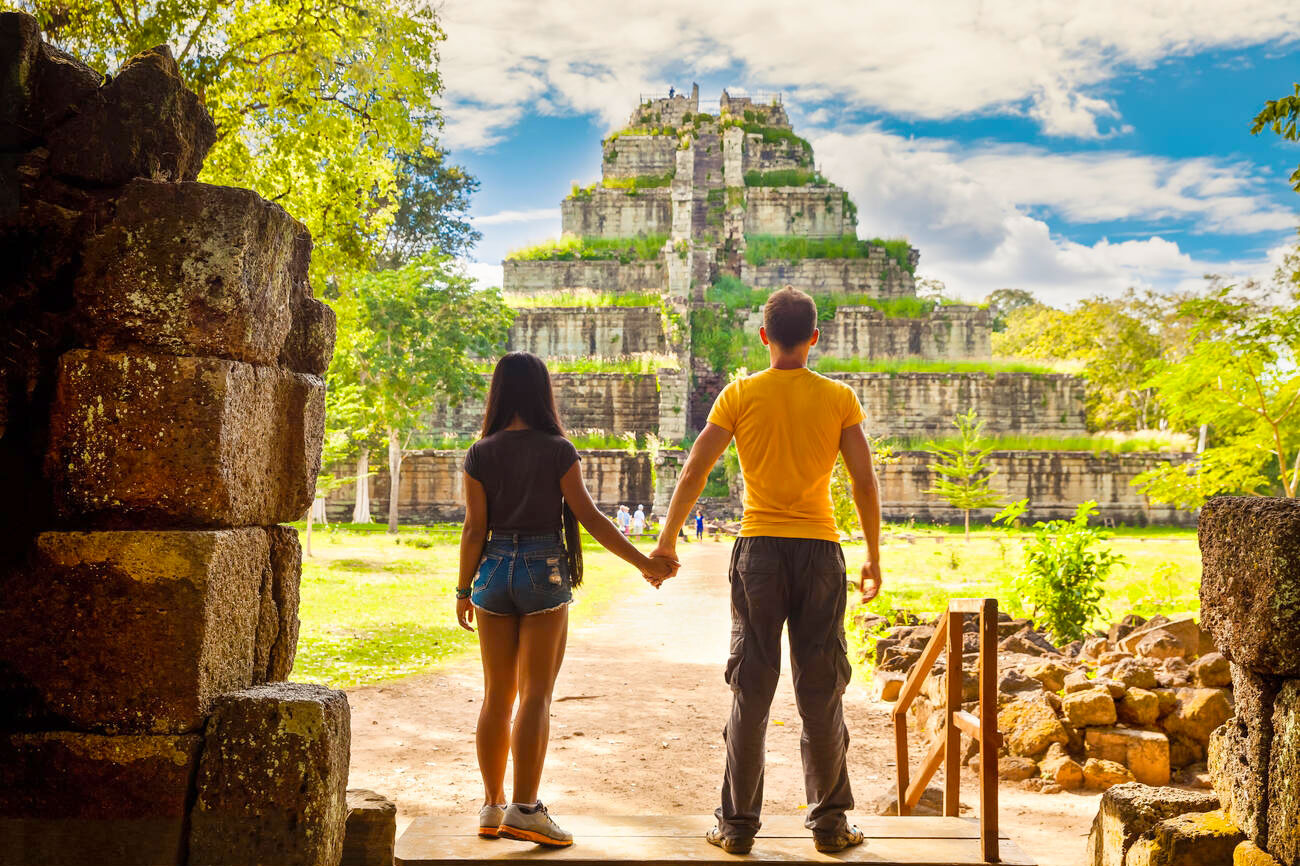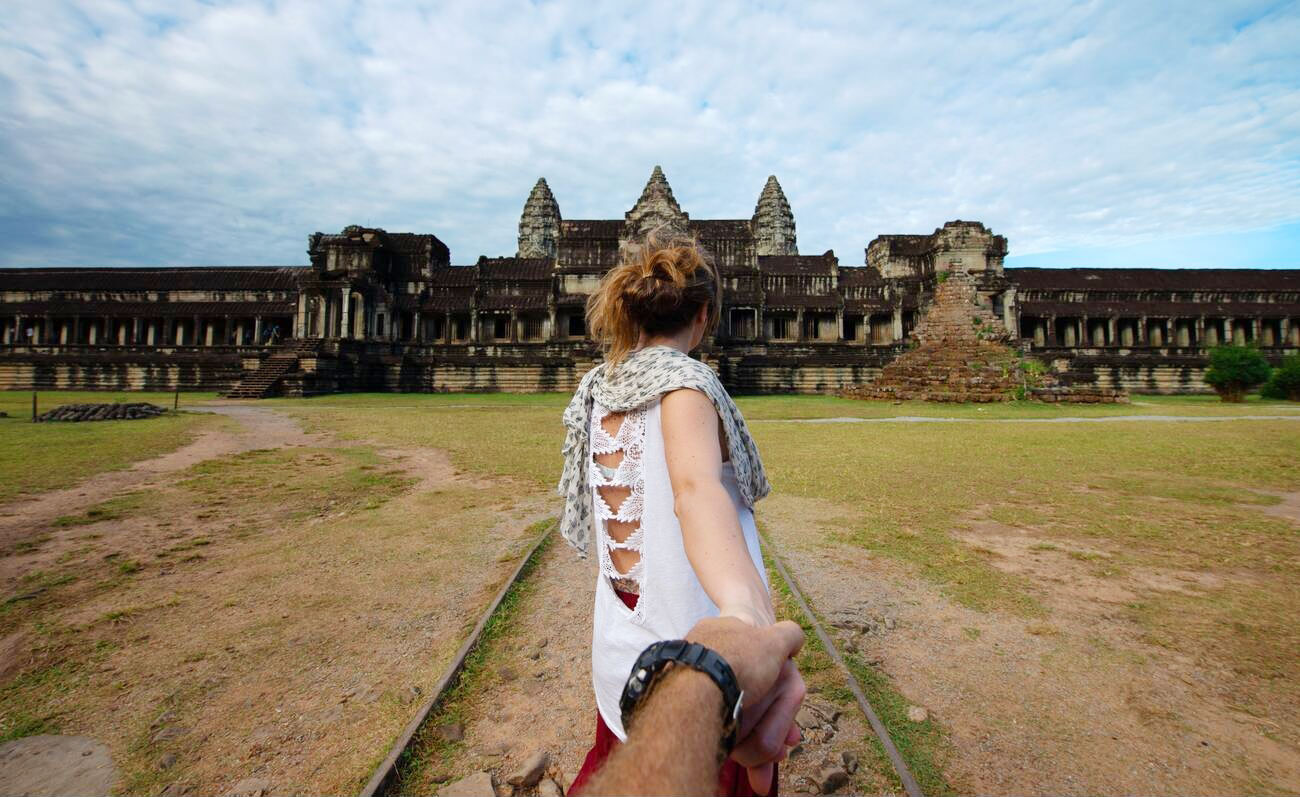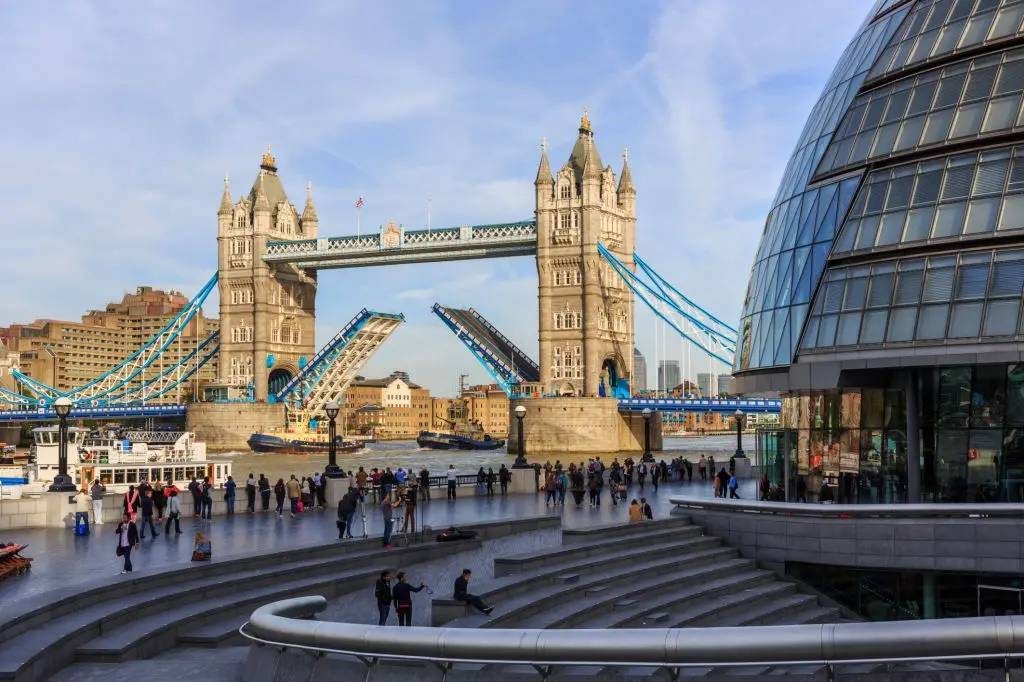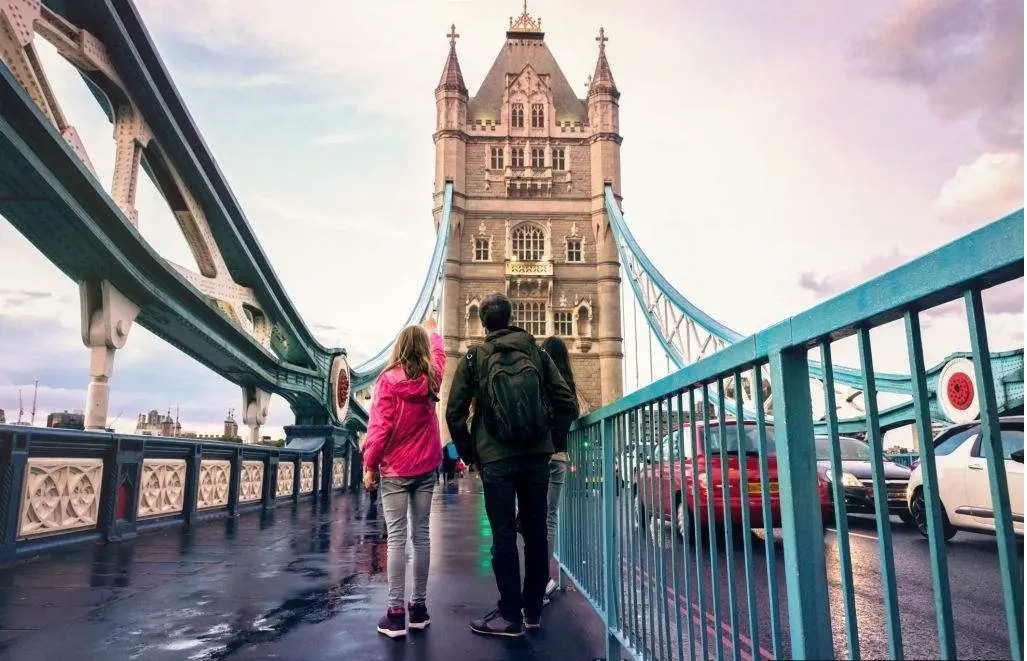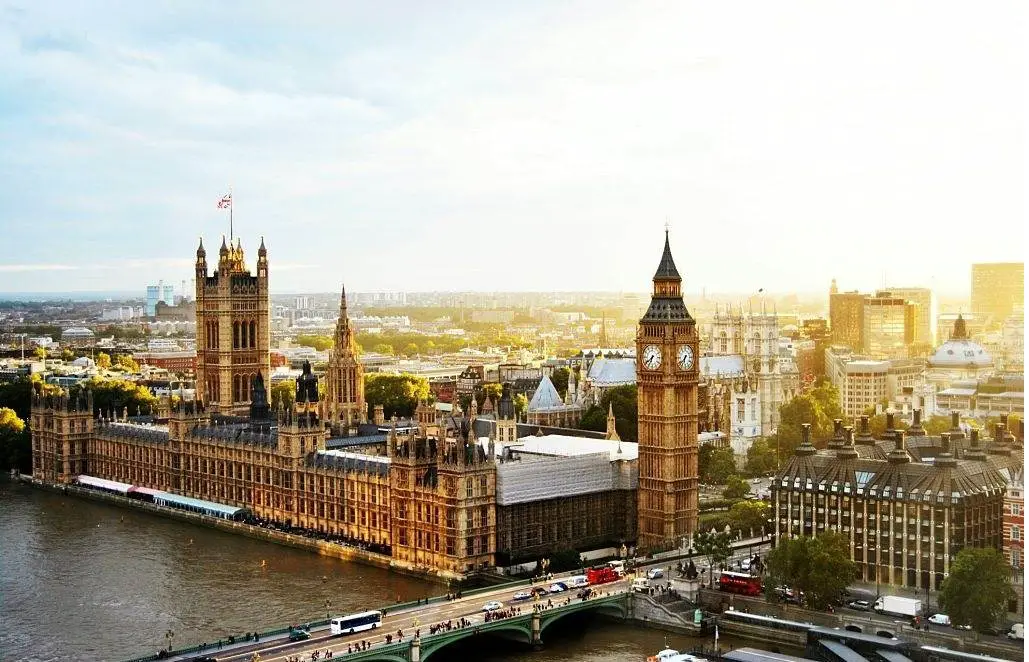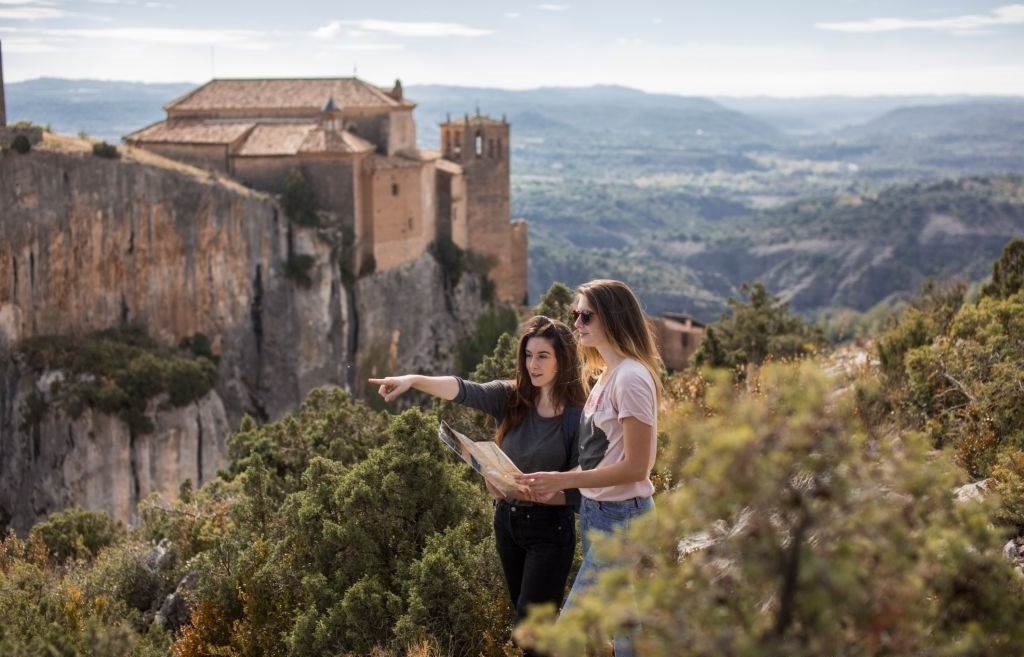Summary
- This article explores Ta Prohm’s jungle-tangled ruins and highlights its historical and cultural wonders.
- Readers learn about seasonal variations, essential packing tips, and respectful behavior at sacred sites.
- Practical transportation options, including tuk-tuks, private cars, and group tours, are explained in detail.
- Conservation efforts and sustainable travel improvements in 2025 aim to preserve Ta Prohm’s unique allure.
- Ta Prohm promises a profound experience, merging Cambodia’s natural beauty with its monumental past.
Ta Prohm is one of Cambodia's most enticing historical sites, drawing visitors eager to uncover its ancient walls' deep mysteries and awe-inspiring beauty. It is situated within the enormous Angkor Archaeological Park, which houses the renowned Angkor Wat and many other temples of similar historic grandeur. Despite sharing the park’s breathtaking appeal, Ta Prohm distinguishes itself through its powerful depiction of nature’s entangling hold over centuries-old stone structures. When you plan your visit in 2025, this temple will still exude that classic, photogenic ambiance with tree roots weaving into the corridors and towers, creating an unforgettable travel experience for those who enter.
Below, you will find a comprehensive and professional guide that addresses everything from the temple’s historical significance to planning essentials, visitation travel tips, and more. Whether you are an intrepid traveler or a first-timer, this guide will help you navigate Ta Prohm, revealing its hidden wonders and ensuring that your upcoming trip in 2025 becomes a transformative journey into Cambodia’s cultural heritage.
Ta Prohm Overview
In the heart of Cambodia’s Siem Reap Province lies a temple complex so intertwined with nature that it appears, at times, to be part of the jungle itself. Ta Prohm captivates travelers with gnarled tree roots gripping onto crumbling stone walls, centuries of weathering that have only enhanced its mystique, and a quiet atmosphere brimming with stories of old. Anyone who walks through its mossy pathways senses the weight of the past. This feeling only intensifies when noticing the interplay of shadow and sunlight upon the entwined ancient architecture.
The year 2025 brings modern travelers a fantastic opportunity to witness Ta Prohm’s enduring majesty. It’s no wonder that many films—most famously, Tomb Raider—have used it as a site to convey otherworldly atmospheres. While it has become a popular filming location, its cultural and historical significance extends beyond Hollywood. Established initially as a Mahayana Buddhist monastery and university by King Jayavarman VII in the late 12th to early 13th century, Ta Prohm was dedicated to the king’s mother. Over the years, this temple has survived invasive jungle growth, conflicts, and the passage of time. UNESCO recognized the entire Angkor area as a World Heritage Site, ensuring protection and sustained efforts for conservation.
Ta Prohm is typically a “must-see for travelers heading to Cambodia.” However, its continued popularity calls for mindful travel planning. Visitors must respect local customs and preservation initiatives like any treasured heritage site. The energy of the place resonates deeply, and in 2025, an improved tourism infrastructure in Siem Reap will grant convenient access to Ta Prohm, making your experience more fulfilling than ever.
Things & Activities to Do at Ta Prohm
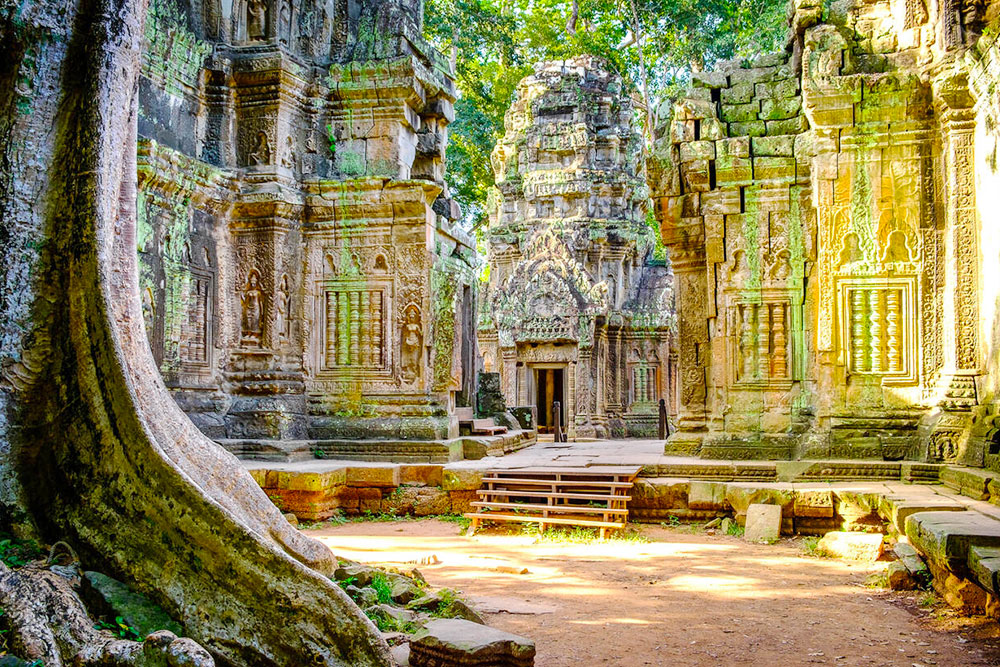
Exploring Ta Prohm doesn’t require a strictly planned schedule; one of the joys is simply wandering the labyrinthine corridors and letting your eyes discover hidden details. However, specific highlights and activities can enrich your experience.
One such highlight is the Hall of Dancers. Although partially collapsed, it was once a decorative space adorned with dancing apsaras carved into the walls. It resonates with an artistic energy that harks back to Angkor’s golden age, even in its semi-ruined state. Many visitors photograph the massive Tetrameles nudiflora tree's enormous roots, which coil around doorways like the temple's guardians. Taking pictures here has become almost a rite of passage—yet it’s vital to tread softly to avoid damaging fragile pathways.
An alternative approach to exploring Ta Prohm is to engage a knowledgeable, licensed guide. Guides often share enchanting stories, from details about local myths and inscriptions to the significance of the temple’s layout and modern conservation challenges. If you prefer exploring at your own pace without a guide, a well-researched travel book or audio guide can offer valuable context. Many visitors combine a guided portion with solo roaming, immersing themselves in the ancient ambiance.
Capturing sunrise or late afternoon shots can be exceptionally rewarding for travelers who appreciate photography. Because large canopy trees famously overshadow Ta Prohm, the lighting can create striking silhouettes and beam through cracks in the roofless galleries, adding a cinematic touch to your images. Experiment with angles, close-ups of tree bark merging with stone, or wide shots of entire courtyards. Photography can be more than just a record of your trip—it is an artistic way to engage with the temple’s spirit.
Another less tangible activity is to pause and absorb the natural soundscape. Birdsong, distant rustling leaves, and the muffled echoes of your footsteps can provide an almost meditative moment. Many visitors find themselves overcome by the serenity of the site, prompting a quiet, reflective state of mind. If your schedule allows, staying longer can let you see the temple empty once tour groups depart, offering an even more peaceful experience.
Best Time to Visit Ta Prohm
Cambodia’s weather follows two primary seasons: wet (roughly May to October) and dry (November to April). Each season has its advantages when it comes to exploring Ta Prohm. During the wet season, the surrounding vegetation is lush, the moats and ponds are refilled, and fewer crowds can bear the rainfall. This season’s cloud cover often creates diffused lighting, perfect for photography, though you do have to navigate more slippery pathways. You can discover the temple's quieter side if you don’t mind occasional downpours and high humidity.
In contrast, the dry season between November and April is traditionally the peak travel window, particularly December through February. The cooler mornings and less frequent rainfall facilitate more comfortable daylong temple explorations. Still, the high season attracts the largest crowds, meaning bus tours and lines at popular photo spots, especially midmorning. If you are planning your Ta Prohm visit in 2025, you might want to schedule your arrival as early as possible in the morning to avoid the bulk of tourist traffic.
Travelers who want to balance manageable weather with moderate crowds might consider the shoulder months—late October or early November and again in late March or early April. These periods often provide the most favorable conditions for photography, with natural sunlight that highlights the greenery, tree roots, and stone reliefs.
Regardless of the time of year, bringing along water, sun protection, and weather-appropriate gear remains vital for a comfortable excursion. Advanced research about Cambodia’s climate patterns can help you pick the ideal window that fits your weather preferences and your desire for fewer crowds.
What to Pack for Ta Prohm?
Packing for a day at Ta Prohm might not demand a heavy load, but strategic choices can enhance your comfort and the overall experience. A small backpack or a comfortable sling bag is enough for essential items. A slightly larger bag holding snacks, water, and additional accessories might be more practical if you visit multiple temples daily. Comfortable footwear is necessary; you will likely walk across uneven stones and damp, mossy pathways. Sturdy walking shoes or well-fitted sandals with good grip are preferable to flip-flops, which might be slippery in wet conditions.
Clothing should be lightweight and breathable, given Cambodia’s tropical climate. Remember that Angkor Archaeological Park is a sacred historical site, so dressing modestly is respectful and often required. Clothing that covers your shoulders and knees is recommended. A hat and sunglasses provide sun protection, and carrying a compact umbrella or lightweight rain jacket can prepare you for surprise tropical showers—widespread during the monsoon season.
Photography enthusiasts will want to carry their best camera gear, though remember that tripods can be cumbersome and might occasionally face restrictions in crowded spots. A small cloth can help wipe lenses dampened by humidity. An extra battery or portable charger is highly recommended, especially if you plan to capture many images or videos.
Pack plenty of water and perhaps a few energy bars for personal comfort for a quick snack if hunger strikes. Most guided tours offer water, but it’s better to have your supply to stay hydrated in the heat. Lastly, do not forget insect repellent; mosquitoes can be active in the lush environment around Ta Prohm, particularly during the rainy season.
How to Get Ta Prohm?
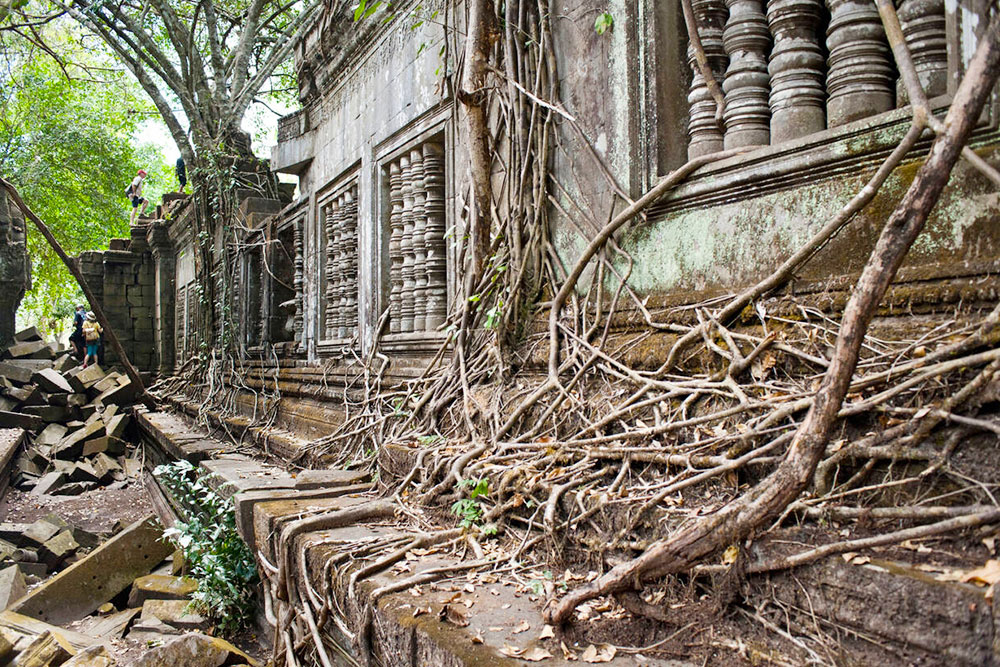
Arriving in Siem Reap from most international locations typically involves flying into Siem Reap International Airport. In 2025, flight connections have improved due to a rise in tourism to Cambodia, making travel both more accessible and more competitive in price. Depending on your starting point, direct flights or short layovers at major Southeast Asian hubs (such as Bangkok, Kuala Lumpur, or Singapore) are common. Once in Siem Reap, the most common ways to reach Ta Prohm and other Angkor temples include tuk-tuks, hired cars, and guided tour buses.
Tuk-tuks represent the quintessential Cambodian transport experience. They’re inexpensive, relatively quick, and allow a breezy, open-air journey. You can negotiate a fair price directly with drivers, especially if you plan on visiting multiple sites in a single day. Alternatively, many hotels and guesthouses can arrange a tuk-tuk driver for you, ensuring a hassle-free trip. If comfort and convenience rank high, booking a private car or a van with a professional driver is also possible. These vehicles provide air conditioning and can be arranged through travel agencies or hotel concierge services.
Group tours remain popular, especially if you prefer a more structured schedule. Usually, such tours arrange pickups from central Siem Reap hotels, covering entrance fees, guides, and sometimes meals. They are perfect for first-time visitors who appreciate background information on every site without worrying about transport logistics. However, remember that group tours can sometimes limit your freedom if you wish to explore at a slower or faster pace or if you want to linger for extended photography sessions.
The Angkor Pass is mandatory for all visitors exploring temples in the Angkor Archaeological Park. You can buy one-, three-, or seven-day passes. When planning to visit multiple temples, it might be cost-effective to purchase a longer pass, allowing more flexibility and time to savor each site, including Ta Prohm, without rushing.
Ta Prohm in 2025: A Closer Look
With evolving tourism and enhanced preservation measures, Ta Prohm in 2025 is both more accessible and more carefully protected. Infrastructure upgrades around the Angkor Archaeological Park have improved pathways and introduced subtle signs to guide visitors. In certain congested areas, designated walking routes prevent overcrowding and minimize damage to ancient stone. The authorities, in collaboration with international conservation teams, have also strengthened some precarious walls, ensuring a safer environment for exploration.
These measures highlight the delicate balance between safeguarding a UNESCO World Heritage Site and making it enjoyable for tourists. In 2025, you will find improved visitor facilities near the park entrance, including new rest areas, restrooms, and small cafés serving refreshments. However, the mystique of Ta Prohm remains intact; the modifications do not detract from its immersive, jungle-choked allure. If anything, the local government’s continuous emphasis on sustainable tourism aims to prolong the temple’s lifespan, allowing travelers to marvel at this captivating location for future generations.
Conservation experts keep a watchful eye on the interplay of tree roots and stone walls. While the iconic “tree-in-temple” scenes are still visible, some trees threatening structural stability may be pruned or stabilized to protect the monument and visitors’ safety. The challenge lies in maintaining the essence of Ta Prohm’s organic ambiance while ensuring that catastrophic collapses do not occur. These ongoing measures require delicate judgment, as the interplay of nature and stone draws many visitors here in the first place.
Best Travel Tips for Ta Prohm
To fully appreciate Ta Prohm, consider carving out ample time to explore its corridors beyond the well-trodden central areas. Though the site is not as large as Angkor Wat, you will want to wander slowly, especially if photography, contemplation, or historical curiosity is part of your interest. Arriving early, around sunrise, can help you sidestep massive crowds, and the soft morning light imbues the trees and ruins with a magical glow. Late afternoon also yields a softer light, though it may coincide with departing tour groups.
Respectful behavior not only preserves the temple but also enhances everyone’s experience. Avoid climbing onto unstable ruins; the structures are aging, and any added stress can worsen cracks. Even resting on particular walls can cause damage over time. Many professional guides will ask their groups to avoid touching carvings, as oils and moisture from human skin can lead to gradual deterioration.
Dealing with the tropical climate effectively is crucial. Hydration should be a priority. Bring water, sip regularly, and take short breaks in shaded areas if you feel overheated. The heat can drain energy faster than expected, and you might find yourself parched while wandering among the towering walls. If you are on a daylong tour that includes other temples, schedule a midday rest or lunch break, allowing time to recover before continuing your exploration in the afternoon.
Local vendors near Angkor Archaeological Park often offer cold drinks, snacks, and crafts for those seeking souvenirs or a quick bite. Bargaining is a common practice but maintains politeness and perspective. Always remember that tourism is a key livelihood for many locals, so fair exchanges benefit everyone involved.
Conclusion
Ta Prohm is far more than another temple in Angkor’s vast archaeological treasury. It is a living tapestry of history, culture, and nature’s patient reclamation of human endeavors. From its towering trees woven into the temple’s structure to the intricate carvings that have endured centuries, every corner whispers the story of Cambodia’s spiritual and royal heritage. These layers of history remain intact as we move into 2025, thanks to deliberate preservation efforts that maintain Ta Prohm’s signature blend of ruin and regrowth.
Ta Prohm is a once-in-a-lifetime stop for anyone dreaming of traveling to Cambodia and seeking an immersive historical journey. Planning your visit involves balancing weather considerations, packing wisely, and dedicating enough time to walk unhurriedly through the complex. Whether you witness it alone, in a group, with a guide, or through personal curiosity, Ta Prohm promises a sense of awe seldom replicated anywhere else. As you depart its mossy pathways, you carry with you a reminder of time’s grandeur, civilizations' past, and nature’s everlasting promise to reclaim its domain.
Enjoy an unforgettable escapade with our specially crafted Cambodia itineraries. Experience iconic temples, savor local delicacies, and connect with welcoming communities—memories that will stay long after your adventure ends.

